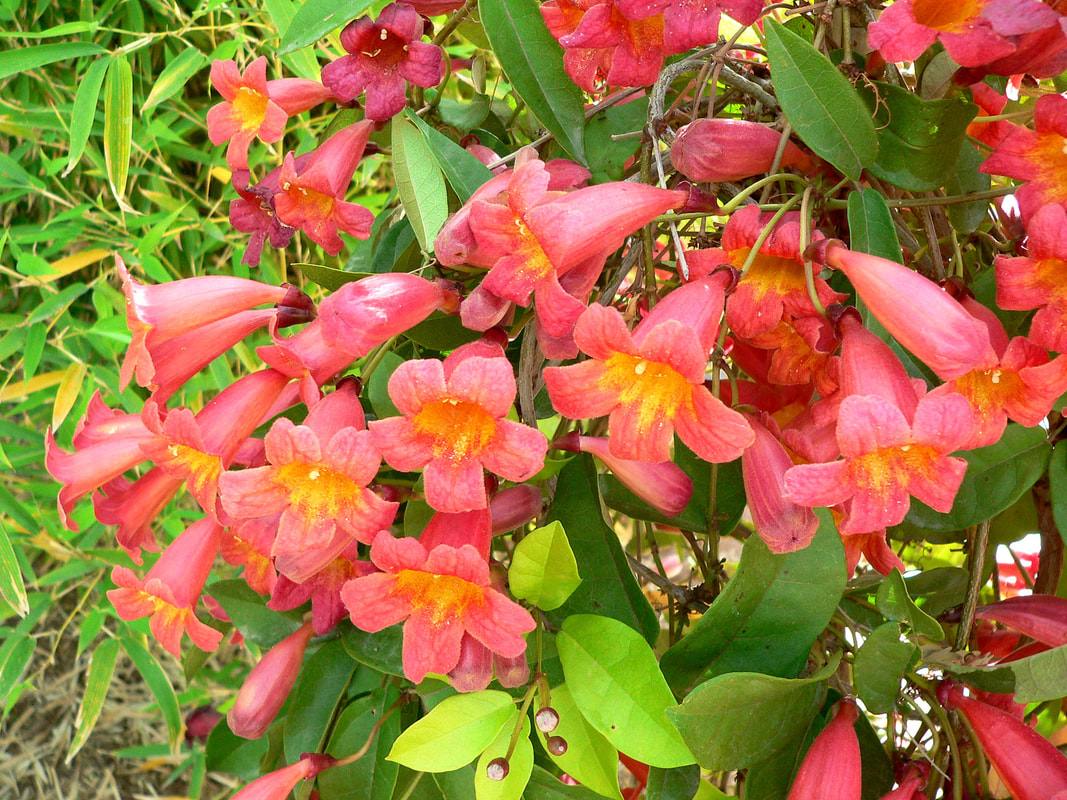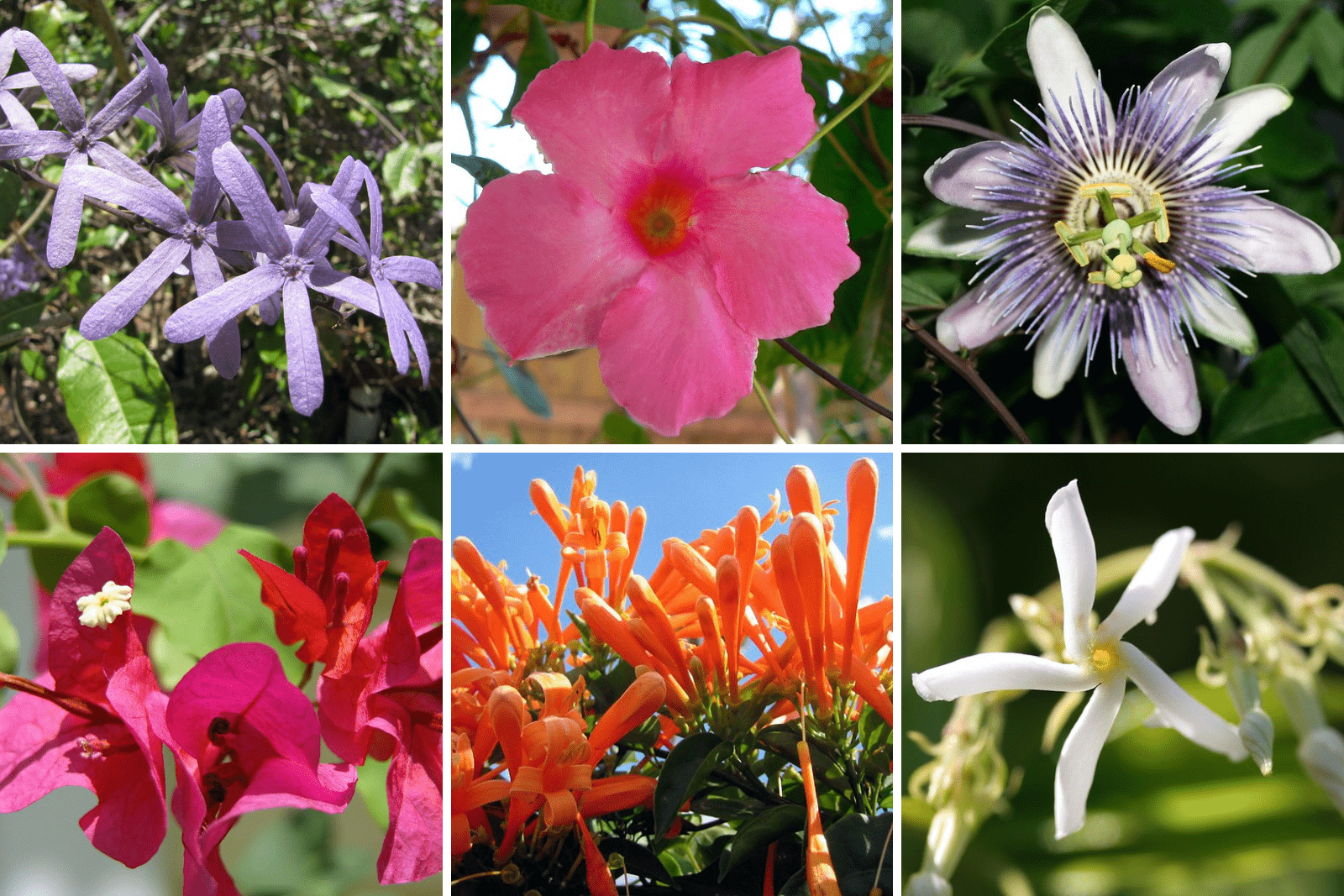“`html
Flowering Vines of Florida: A Comprehensive Guide
Flowering Vines of Florida: A Comprehensive Guide
Florida, with its subtropical and tropical climate, provides a lush and vibrant environment for a diverse array of flowering vines. These climbers add vertical interest, fragrance, and a burst of color to gardens, landscapes, and natural areas. From the delicate blooms of the Confederate Jasmine to the vibrant trumpets of the Scarlet Creeper, Florida’s flowering vines offer a spectacle for every season. This comprehensive guide explores the most popular and captivating flowering vines that thrive in the Sunshine State.
Understanding Florida’s Climate and Its Impact on Vines
Florida’s climate is characterized by hot, humid summers and mild winters, with varying degrees of rainfall depending on the region. This unique climate influences the types of vines that can flourish. South Florida, with its tropical climate, supports a wider range of tropical vines, while Central and North Florida, with their subtropical climates, are more suitable for temperate and subtropical species. Understanding these regional differences is crucial for selecting the right vine for your specific location.
Key Climate Factors:

Temperature: Florida’s warm temperatures allow for year-round growth for many vines. However, some species may be sensitive to occasional frosts in North Florida.
Humidity: High humidity levels are generally beneficial for most flowering vines, promoting lush foliage and abundant blooms.
Rainfall: Florida receives significant rainfall, particularly during the summer months. This consistent moisture is essential for the healthy growth of many vines.
Sunlight: Florida’s abundant sunshine provides ample light for flowering vines. However, some species prefer partial shade, especially during the hottest parts of the day.
Popular Flowering Vines in Florida
Here’s a detailed look at some of the most popular and beautiful flowering vines that thrive in Florida:
Confederate Jasmine (Trachelospermum jasminoides)
The Confederate Jasmine is a classic favorite, known for its intoxicating fragrance and star-shaped white flowers. This evergreen vine is relatively low-maintenance and adaptable to various soil types. It thrives in full sun to partial shade and is commonly used to cover fences, trellises, and arbors. Its sweet, jasmine-like scent is particularly strong in the evening, making it a delightful addition to any garden.
Bougainvillea (Bougainvillea spp.)

Bougainvilleas are renowned for their vibrant, papery bracts that come in a wide range of colors, including pink, red, orange, purple, and white. These tropical vines are drought-tolerant and thrive in full sun. They are ideal for creating a splash of color on walls, fences, and pergolas. Bougainvilleas require well-draining soil and minimal watering once established. Pruning is essential to maintain their shape and encourage flowering.
Passionflower (Passiflora spp.)
Passionflowers are known for their intricate and exotic blooms. These vines are native to tropical and subtropical regions and are well-suited to Florida’s climate. They attract butterflies and other pollinators, making them a valuable addition to any wildlife garden. The edible fruits of some species, such as the Purple Passionfruit (Passiflora edulis), are also a bonus. Passionflowers prefer full sun to partial shade and well-draining soil.
Scarlet Creeper (Ipomoea quamoclit)
The Scarlet Creeper, also known as Cardinal Climber, is a fast-growing annual vine that produces vibrant, trumpet-shaped red flowers. It’s a favorite among hummingbirds and butterflies. This vine thrives in full sun and well-draining soil. It’s ideal for covering fences, trellises, and arbors, adding a burst of color to the landscape.
Coral Honeysuckle (Lonicera sempervirens)
Coral Honeysuckle is a native vine that produces clusters of vibrant red, tubular flowers. It’s a favorite among hummingbirds and is relatively low-maintenance. This vine prefers full sun to partial shade and well-draining soil. It’s an excellent choice for naturalizing areas and attracting wildlife.
Wisteria (Wisteria spp.)

Wisteria is a deciduous vine known for its cascading clusters of fragrant flowers. While some species can be invasive, the native American Wisteria (Wisteria frutescens) is a good choice for Florida gardens. It produces beautiful purple or white flowers and is less aggressive than its Asian counterparts. Wisteria prefers full sun to partial shade and well-draining soil. It requires a sturdy support structure, such as a pergola or arbor.
Climbing Roses (Rosa spp.)
Climbing roses add a touch of classic elegance to any garden. They produce beautiful, fragrant flowers in a variety of colors and forms. Climbing roses require full sun and well-draining soil. They need a sturdy support structure and regular pruning to maintain their shape and encourage flowering.
Mandevilla (Mandevilla spp.)
Mandevillas are tropical vines known for their vibrant, trumpet-shaped flowers. They come in a variety of colors, including red, pink, and white. Mandevillas thrive in full sun to partial shade and well-draining soil. They are ideal for container gardening and adding a splash of color to patios and balconies.
Black-Eyed Susan Vine (Thunbergia alata)
The Black-Eyed Susan Vine is a fast-growing annual vine that produces bright orange or yellow flowers with a dark center. It’s a cheerful addition to any garden and is easy to grow. This vine prefers full sun to partial shade and well-draining soil. It’s ideal for covering fences, trellises, and arbors.
Bleeding Heart Vine (Clerodendrum thomsoniae)
The Bleeding Heart Vine is a tropical vine known for its unique and striking flowers. It produces clusters of white bracts with bright red corollas, resembling bleeding hearts. This vine prefers partial shade and well-draining soil. It’s a beautiful addition to shaded gardens and patios.
Tips for Growing Flowering Vines in Florida
To ensure the success of your flowering vines in Florida, consider the following tips:
Soil Preparation
Florida’s sandy soil often lacks nutrients and water-holding capacity. Amend the soil with organic matter, such as compost or peat moss, to improve its structure and fertility. Ensure good drainage to prevent root rot.
Support Structures
Provide sturdy support structures, such as trellises, arbors, or fences, for climbing vines. Choose a support structure that is appropriate for the size and growth habit of the vine.
Watering and Fertilizing
Water newly planted vines regularly until they are established. Once established, water deeply but infrequently, allowing the soil to dry slightly between waterings. Fertilize vines regularly during the growing season with a balanced fertilizer.
Pruning
Prune vines regularly to maintain their shape, encourage flowering, and prevent them from becoming overgrown. Pruning techniques vary depending on the species, so research the specific requirements of your vine.
Pest and Disease Control
Monitor vines for pests and diseases, and take appropriate action to control them. Common pests include aphids, spider mites, and scale insects. Common diseases include fungal infections and root rot.
Conclusion
Flowering vines add a touch of beauty, fragrance, and vertical interest to Florida’s landscapes. With a wide variety of species to choose from, you can find the perfect vines to complement your garden and create a vibrant and inviting outdoor space. By understanding Florida’s climate and following the tips outlined in this guide, you can successfully grow and enjoy these captivating climbers.
“`



